Systemic lupus erythematosus MRI: Difference between revisions
No edit summary |
|||
| (24 intermediate revisions by 3 users not shown) | |||
| Line 1: | Line 1: | ||
__NOTOC__ | __NOTOC__ | ||
{{Systemic lupus erythematosus}} | {{Systemic lupus erythematosus}} | ||
{{CMG}} | {{CMG}} {{AE}} {{MIR}} | ||
==Overview== | ==Overview== | ||
On [[MRI|abdominal MRI]], systemic lupus erythematosus (SLE) may be characterized by [[hepatomegaly]], [[Pancreas|pancreatic]] parenchymal enlargement, and hypervascularity of [[mesentery]]. On [[cardiac MRI]], SLE may be characterized by mitral leaflet thickening, pericardial thickness, and [[Pericardial effusion|pericardial effusions]]. On brain [[MRI]], SLE may be characterized by [[white matter]] [[Lesion|lesions]], changes in [[blood circulation]] of the brain, and patchy areas of enhancement. On musculoskeletal [[MRI]], SLE may be characterized by [[intramuscular]] [[edema]], [[Tenosynovitis|proliferative tenosynovitis]], and [[bone marrow]] [[edema]]. | |||
===== | == Key MRI findings in systemic lupus erythematosus == | ||
Most of SLEs complications can be visualized with other, more feasible imaging techniques, so MRI is not the imaging modality of choice for the diagnosis of most complications of SLE. However, if it is done, the following changes can be found in different organ systems of the body:<ref name="pmid23812167">{{cite journal |vauthors=Appenzeller S |title=Magnetic resonance imaging in systemic lupus erythematosus: where do we stand? |journal=Cogn Behav Neurol |volume=26 |issue=2 |pages=53–4 |year=2013 |pmid=23812167 |doi=10.1097/WNN.0b013e31829d5b60 |url=}}</ref><ref name="pmid26309728">{{cite journal |vauthors=Thurman JM, Serkova NJ |title=Non-invasive imaging to monitor lupus nephritis and neuropsychiatric systemic lupus erythematosus |journal=F1000Res |volume=4 |issue= |pages=153 |year=2015 |pmid=26309728 |pmc=4536614 |doi=10.12688/f1000research.6587.2 |url=}}</ref><ref name="pmid26038342">{{cite journal |vauthors=Lin K, Lloyd-Jones DM, Li D, Liu Y, Yang J, Markl M, Carr JC |title=Imaging of cardiovascular complications in patients with systemic lupus erythematosus |journal=Lupus |volume=24 |issue=11 |pages=1126–34 |year=2015 |pmid=26038342 |pmc=4567427 |doi=10.1177/0961203315588577 |url=}}</ref><ref name="pmid26236469">{{cite journal |vauthors=Sarbu N, Bargalló N, Cervera R |title=Advanced and Conventional Magnetic Resonance Imaging in Neuropsychiatric Lupus |journal=F1000Res |volume=4 |issue= |pages=162 |year=2015 |pmid=26236469 |pmc=4505788 |doi=10.12688/f1000research.6522.2 |url=}}</ref><ref name="pmid24696368">{{cite journal |vauthors=Qin H, Guo Q, Shen N, Huang X, Wu H, Zhang M, Bao C, Chen S |title=Chest imaging manifestations in lupus nephritis |journal=Clin. Rheumatol. |volume=33 |issue=6 |pages=817–23 |year=2014 |pmid=24696368 |doi=10.1007/s10067-014-2586-2 |url=}}</ref><ref name="pmid22901453">{{cite journal |vauthors=Goh YP, Naidoo P, Ngian GS |title=Imaging of systemic lupus erythematosus. Part II: gastrointestinal, renal, and musculoskeletal manifestations |journal=Clin Radiol |volume=68 |issue=2 |pages=192–202 |year=2013 |pmid=22901453 |doi=10.1016/j.crad.2012.06.109 |url=}}</ref><ref name="pmid23943987">{{cite journal |vauthors=Gal Y, Twig G, Mozes O, Greenberg G, Hoffmann C, Shoenfeld Y |title=Central nervous system involvement in systemic lupus erythematosus: an imaging challenge |journal=Isr. Med. Assoc. J. |volume=15 |issue=7 |pages=382–6 |year=2013 |pmid=23943987 |doi= |url=}}</ref><ref name="pmid1448334">{{cite journal |vauthors=Shirato M, Hisa N, Fujikura Y, Ohkuma K, Kutsuki S, Hiramatsu K |title=[Imaging diagnosis of lupus enteritis--especially about sonographic findings] |language=Japanese |journal=Nihon Igaku Hoshasen Gakkai Zasshi |volume=52 |issue=10 |pages=1394–9 |year=1992 |pmid=1448334 |doi= |url=}}</ref><ref name="pmid25275093">{{cite journal |vauthors=Adachi JD, Lau A |title=Systemic lupus erythematosus, osteoporosis, and fractures |journal=J. Rheumatol. |volume=41 |issue=10 |pages=1913–5 |year=2014 |pmid=25275093 |doi=10.3899/jrheum.140919 |url=}}</ref><ref name="pmid21718325">{{cite journal |vauthors=Curiel R, Akin EA, Beaulieu G, DePalma L, Hashefi M |title=PET/CT imaging in systemic lupus erythematosus |journal=Ann. N. Y. Acad. Sci. |volume=1228 |issue= |pages=71–80 |year=2011 |pmid=21718325 |doi=10.1111/j.1749-6632.2011.06076.x |url=}}</ref><ref name="pmid22901452">{{cite journal |vauthors=Goh YP, Naidoo P, Ngian GS |title=Imaging of systemic lupus erythematosus. Part I: CNS, cardiovascular, and thoracic manifestations |journal=Clin Radiol |volume=68 |issue=2 |pages=181–91 |year=2013 |pmid=22901452 |doi=10.1016/j.crad.2012.06.110 |url=}}</ref> | |||
===== | |||
===== | |||
===== | |||
{| class="wikitable" | {| class="wikitable" | ||
!Organ | ! style="background: #4479BA; color: #FFFFFF; " |Organ involvement | ||
!Disease | ! style="background: #4479BA; color: #FFFFFF; " |Disease | ||
! | ! style="background: #4479BA; color: #FFFFFF; " |MRI | ||
! style="background: #4479BA; color: #FFFFFF; " |Preview | |||
! | |||
|- | |- | ||
|[[Hepatitis]] | | rowspan="4" style="background: #DCDCDC; " |<small><small>[[Gastrointestinal]]</small></small> | ||
![[Hepatitis]] | |||
| | | | ||
** | * [[Hepatomegaly]] | ||
* [[Nodules]] that ranging around 0.5-4.5 cm in diameter | |||
** T2: nonspecific, increased periportal [[edema]] | |||
| | | | ||
[[File:Webp.net-gifmaker (29).gif|thumb|300px|<SMALL><SMALL>''[https://radiopaedia.org/ Adapted from Radiopaedia]''</SMALL></SMALL>]] | |||
[[File:Webp.net-gifmaker (30).gif|thumb|300px|<SMALL><SMALL>''[https://radiopaedia.org/ Adapted from Radiopaedia]''</SMALL></SMALL>]] | |||
|- | |- | ||
![[Cholecystitis]] | |||
| | | | ||
* | * Pericholecystic fluid | ||
* [[Gallbladder|Gall bladder]] wall thickening | |||
*Usually present as acalculus cholecystitis | |||
* | |||
| | |||
* | |||
| | | | ||
| | [[File:Webp.net-gifmaker (31).gif|thumb|300px|<SMALL><SMALL>''[https://acgcasereports.gi.org/acalculous-cholecystitis/ Courtesy given to ACG Case Reports]''</SMALL></SMALL>]] | ||
|- | |- | ||
| | ![[Acute pancreatitis|Pancreatitis]] | ||
| | | | ||
* Contrast-enhanced MR is equivalent to CT in the assessment of [[pancreatitis]] | |||
** Abnormalities that may be seen in the pancreas include: | |||
*** Parenchymal enlargement | |||
*** Surrounding [[retroperitoneal]] fat stranding | |||
*** [[Abscess]] formation | |||
**** Circumscribed fluid collection | |||
| | | | ||
[[File:Webp.net-geifmaker.gif|thumb|300px|<SMALL><SMALL>''[https://radiopaedia.org/ Adapted from Radiopaedia]''</SMALL></SMALL>]] | |||
|- | |- | ||
![[Mesenteric vascular occlusion|Mesenteric vasculitis]] | |||
| | | | ||
* | * Comb sign | ||
* | ** Hypervascular appearance of the [[mesentery]] | ||
| | | | ||
|- | |- | ||
|[[ | | rowspan="4" style="background: #DCDCDC; " |<small><small>[[Cardiac]]</small></small> | ||
![[Mitral stenosis]] | |||
| | | | ||
* | * [[Mitral valve sclerosis|Mitral leaflet thickening]] | ||
* Reduced [[diastolic]] opening | |||
* Abnormal valve motion toward the [[Left ventricle|left ventricular]] outflow tract | |||
| | | | ||
|- | |- | ||
| | ![[Pericarditis|Pericarditis]] | ||
| | | | ||
* | * The normal [[pericardial]] thickness is considered 2 mm while a thickness of over 4 mm suggests a [[pericarditis]] | ||
* Delayed enhancement in the pericardium around heart chambers | |||
* | |||
| | | | ||
[[File:Jjjkjgh.jpeg|thumb|300px|<SMALL><SMALL>''[https://radiopaedia.org/ Adapted from Radiopaedia]''</SMALL></SMALL>]] | |||
| | |||
| | |||
|- | |- | ||
![[Pericardial effusion]] | |||
| | | | ||
* Fluid [[density]] material surrounding the heart | |||
| | | | ||
|- | |- | ||
![[Myocarditis]] | |||
| | | | ||
* Regional or global wall motion abnormalities | |||
* [[Pericardial effusion]] | |||
** Early postcontrast enhancement due to regional vasodilatation and increased blood volume, secondary to the [[inflammation]] | |||
| | | | ||
[[File:Lymphocytic-myocarditis.jpg|thumb|300px|<SMALL><SMALL>''[https://radiopaedia.org/ Adapted from Radiopaedia]''</SMALL></SMALL>]] | |||
|- | |- | ||
|[[ | | rowspan="4" style="background: #DCDCDC; " |<small><small>[[Neurological ]]</small></small> | ||
!Vasculitis | |||
| | | | ||
* [[White matter]] [[lesions]] | |||
* [[Periventricular nucleus|Periventricular]] hyperintensities | |||
* Detects clinically silent [[Lesion|lesions]] | |||
| | | | ||
[[File:675765765.gif|thumb|300px|<SMALL><SMALL>''[https://radiopaedia.org/ Adapted from Radiopaedia]''</SMALL></SMALL>]] | |||
|- | |- | ||
![[Stroke]] | |||
| | | | ||
* Changes in brain [[Vessels|vessel]] blood flow (occlusion on [[Magnetic resonance angiography|MRA]]) | |||
* No parenchymal changes | |||
* Slow or stagnant flow in vessels as a loss of normal flow void | |||
* High T2 signal after 6 hours of [[stroke]] | |||
| | | | ||
[[File:Webp.net-kkkkgifmaker (1).gif|thumb|300px|<SMALL><SMALL>''[https://radiopaedia.org/ Adapted from Radiopaedia]''</SMALL></SMALL>]] | |||
|- | |- | ||
![[Neuropathies]] | |||
| | | | ||
* [[Optic neuritis]] | |||
** [[Retrobulbar block|Retrobulbar]] intra-orbital segment of the [[optic nerve]] appears swollen | |||
*** High T2 signal that may persists and be permanent | |||
** Chronic involvement of [[optic nerve]] | |||
*** [[Atrophy|Atrophied]] nerve | |||
*** Contrast enhancement of the [[nerve]], best seen with fat-suppressed T1 coronal images | |||
| | | | ||
[[File:Hkjhkjhkjhkj.gif|thumb|300px|<SMALL><SMALL>''[https://radiopaedia.org/ Adapted from Radiopaedia]''</SMALL></SMALL>]] | |||
[[File:Webp.net-gjjjifmaker (2).gif|thumb|300px|<SMALL><SMALL>''[https://radiopaedia.org/ Adapted from Radiopaedia]''</SMALL></SMALL>]] | |||
|- | |- | ||
| | ![[Encephalitis|Autoimmune encephalitis]] | ||
| | | | ||
* Mostly in [[temporal lobe]]<nowiki/>s and [[Limbic system|limbic systems]] | |||
* Bilateral involvement is most common (60%), although often asymmetric | |||
* [[Cortical area|Cortical]] thickening | |||
* Increased T2/FLAIR signal intensity of affected regions | |||
* Patchy areas of enhancement | |||
| | | | ||
[[File:Webp.net-glkjlifmaker (3).gif|thumb|300px|<SMALL><SMALL>''[https://radiopaedia.org/ Adapted from Radiopaedia]''</SMALL></SMALL>]] | |||
|- | |- | ||
| rowspan=" | | rowspan="4" style="background: #DCDCDC; " |<small><small>[[Musculoskeletal]]</small></small> | ||
![[Raynaud phenomenon|Raynaud phenomen]] | |||
| | |||
| | | | ||
* Contrast-enhanced [[MR angiography|MR angiograph]] | |||
** Characteristic narrowing of digital [[vessels]] | |||
** Tapering of digital [[vessels]] | |||
| | | | ||
[[File:Webp.net-gifkjhkumaker (4).gif|thumb|300px|<SMALL><SMALL>''[https://radiopaedia.org/ Adapted from Radiopaedia]''</SMALL></SMALL>]] | |||
|- | |- | ||
![[Myositis]] | |||
| | | | ||
* | * [[Edema|Intramuscular edema]] (increased high T2 signal) | ||
* May show an ill-defined, [[hyperintense]], intramuscular lesion, containing isointense lines | |||
* | |||
| | | | ||
[[File:Webp.net-gifegtrsmaker (5).gif|thumb|300px|<SMALL><SMALL>''[https://radiopaedia.org/ Adapted from Radiopaedia]''</SMALL></SMALL>]] | |||
|- | |- | ||
![[Arthritis]]/[[tenosynovitis]] | |||
| | | | ||
* Capsular swelling | |||
* [[Tenosynovitis|Proliferative tenosynovitis]] | |||
* [[Synovial]] overgrowth | |||
| | | | ||
[[File:Webp.net-gjhfdifmaker (6).gif|thumb|300px|<SMALL><SMALL>''[https://radiopaedia.org/ Adapted from Radiopaedia]''</SMALL></SMALL>]] | |||
|- | |- | ||
![[Osteonecrosis]] ([[Avascular necrosis]]) | |||
| | | | ||
* Lack of enhancement and devascularized areas on gadolinium-enhanced MR imaging | |||
* [[Bone marrow]] [[edema]] on MRI | |||
* Low-signal-intensity marginal areas on standard spin-echo T1- and T2-weighted images | |||
* Intermediate to high signal intensity inside bone tissue on T2-weighted images, producing a line of low signal intensity with an adjacent high-signal-intensity line | |||
* High signal intensity on T2-weighted images due to subchondral fractures that may be accompanied by fluid signal intensity or [[edema]] | |||
* Low signal intensity on T2-weighted images due to collapse of the [[articular surface]] | |||
* Early or subtle insufficiency fractures especially on T2-weighted MR imaging | |||
** In characteristic stress locations insufficiency fractures may appear as areas of high signal intensity due to [[bone marrow]] edema | |||
| | | | ||
[[File:Webp.net-gifmjyfssaker (7).gif|thumb|300px|<SMALL><SMALL>''[https://radiopaedia.org/ Adapted from Radiopaedia]''</SMALL></SMALL>]] | |||
[[File:Webp.net-gifmakk2er (8).gif|thumb|300px|<SMALL><SMALL>''[https://radiopaedia.org/ Adapted from Radiopaedia]''</SMALL></SMALL>]] | |||
|} | |} | ||
==References== | ==References== | ||
Latest revision as of 16:21, 1 February 2018
|
Systemic lupus erythematosus Microchapters |
|
Differentiating Systemic lupus erythematosus from other Diseases |
|---|
|
Diagnosis |
|
Treatment |
|
Case Studies |
|
Systemic lupus erythematosus MRI On the Web |
|
American Roentgen Ray Society Images of Systemic lupus erythematosus MRI |
|
Directions to Hospitals Treating Systemic lupus erythematosus |
|
Risk calculators and risk factors for Systemic lupus erythematosus MRI |
Editor-In-Chief: C. Michael Gibson, M.S., M.D. [1] Associate Editor(s)-in-Chief: Mahshid Mir, M.D. [2]
Overview
On abdominal MRI, systemic lupus erythematosus (SLE) may be characterized by hepatomegaly, pancreatic parenchymal enlargement, and hypervascularity of mesentery. On cardiac MRI, SLE may be characterized by mitral leaflet thickening, pericardial thickness, and pericardial effusions. On brain MRI, SLE may be characterized by white matter lesions, changes in blood circulation of the brain, and patchy areas of enhancement. On musculoskeletal MRI, SLE may be characterized by intramuscular edema, proliferative tenosynovitis, and bone marrow edema.
Key MRI findings in systemic lupus erythematosus
Most of SLEs complications can be visualized with other, more feasible imaging techniques, so MRI is not the imaging modality of choice for the diagnosis of most complications of SLE. However, if it is done, the following changes can be found in different organ systems of the body:[1][2][3][4][5][6][7][8][9][10][11]
| Organ involvement | Disease | MRI | Preview |
|---|---|---|---|
| Gastrointestinal | Hepatitis |
|
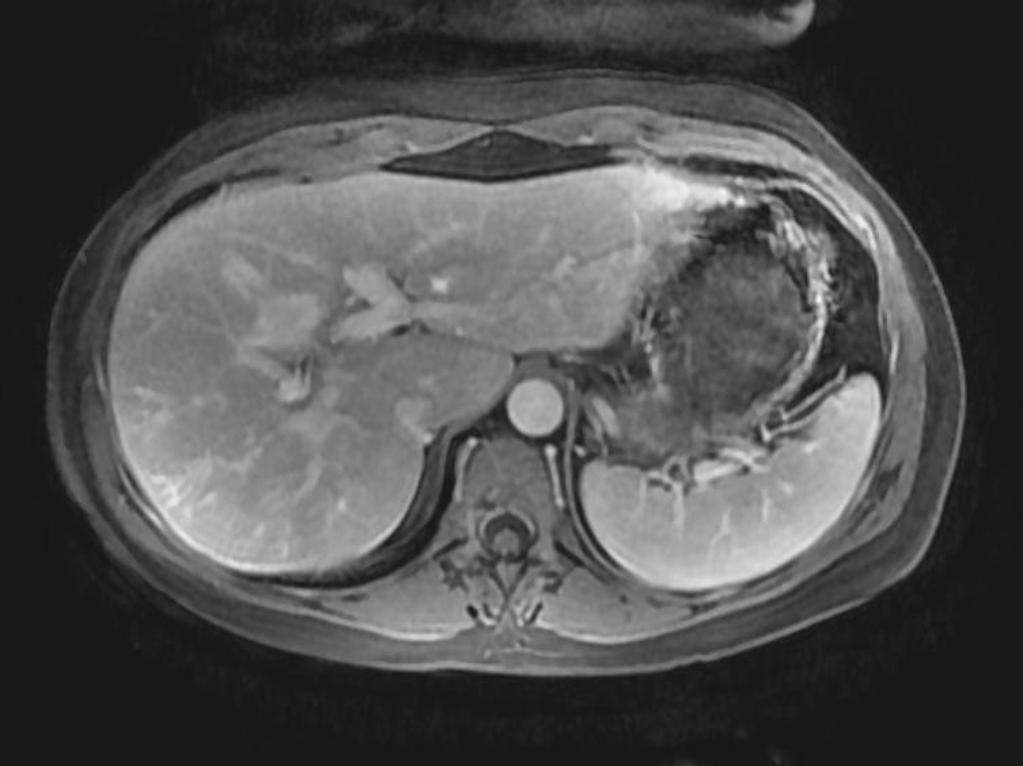 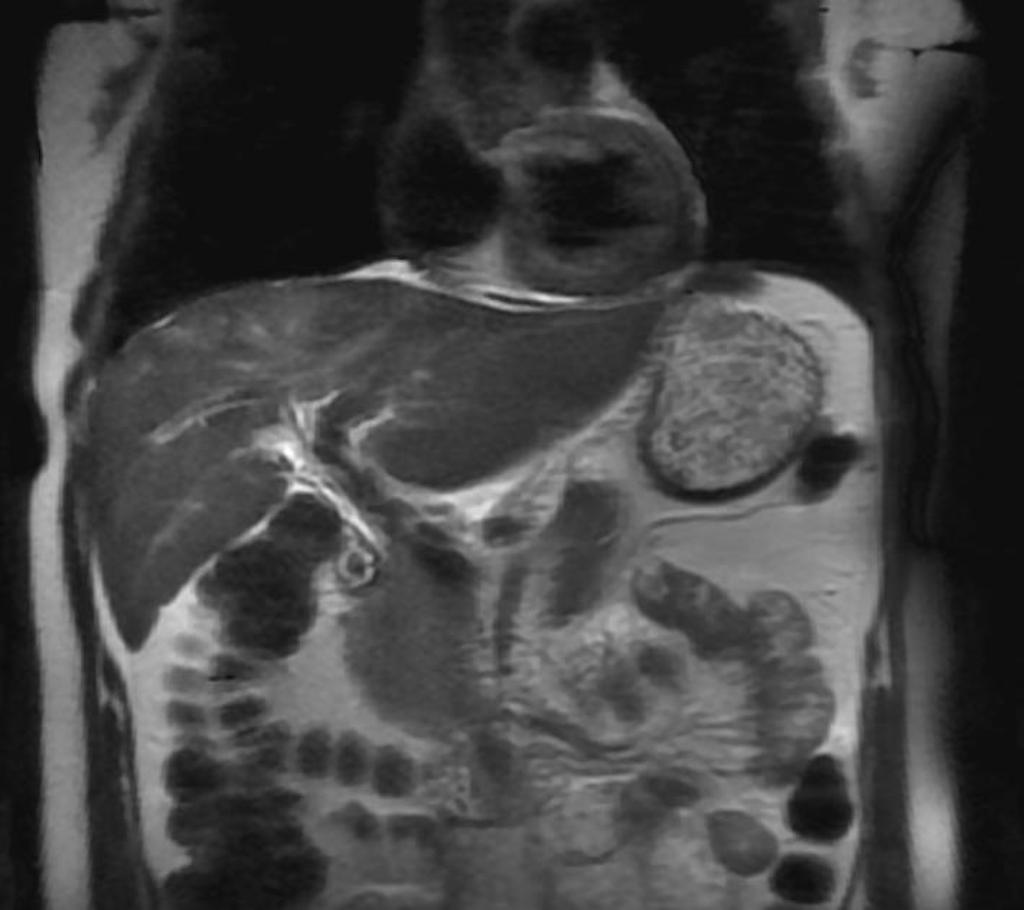 |
| Cholecystitis |
|
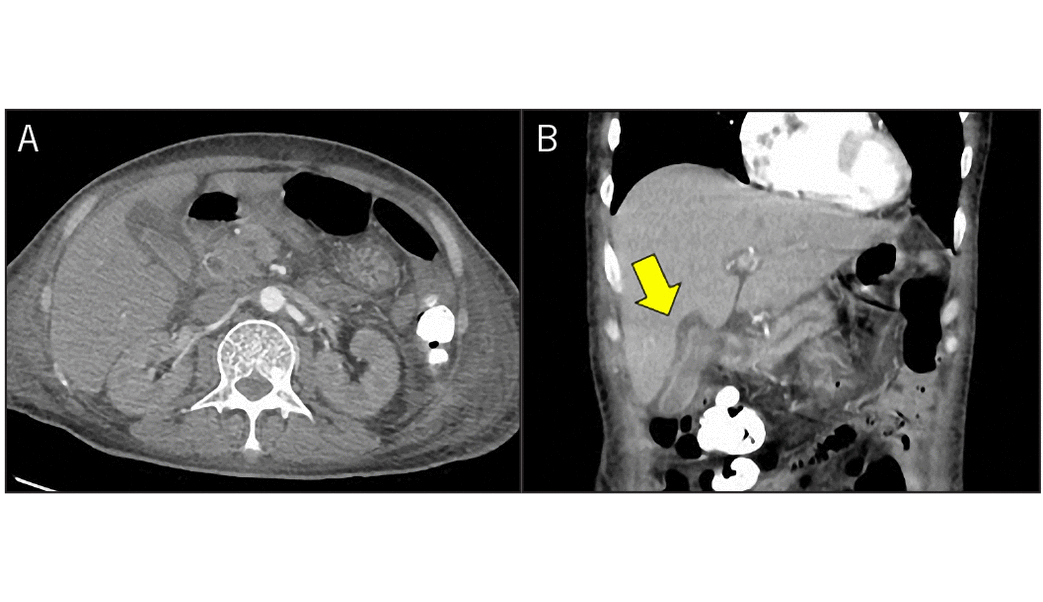 | |
| Pancreatitis |
|
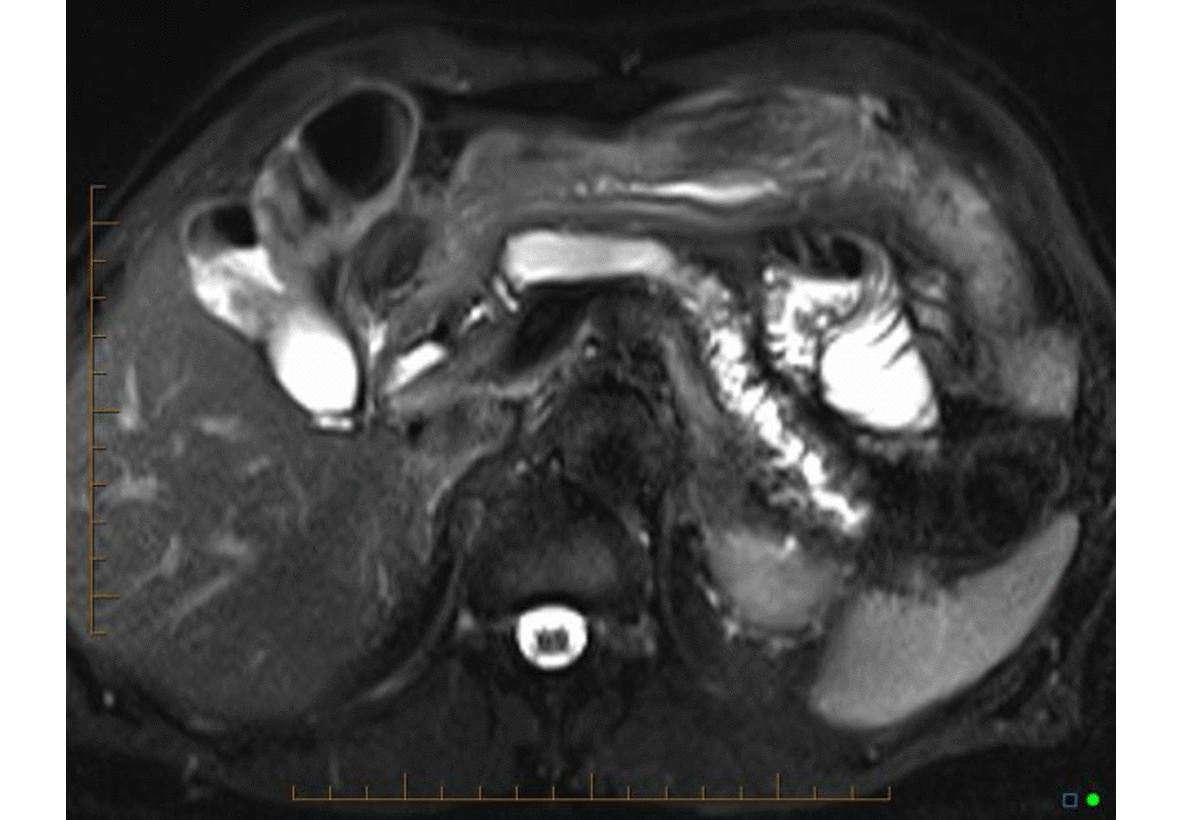 | |
| Mesenteric vasculitis |
|
||
| Cardiac | Mitral stenosis |
|
|
| Pericarditis |
|
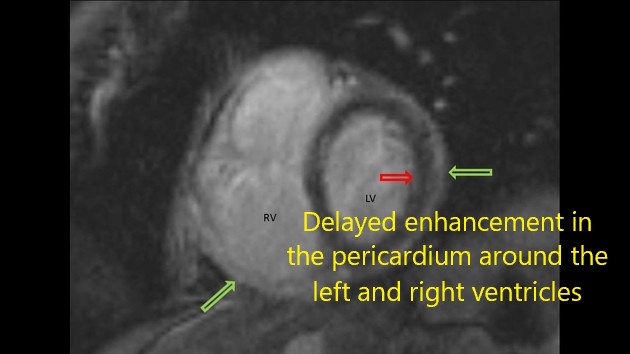 | |
| Pericardial effusion |
|
||
| Myocarditis |
|
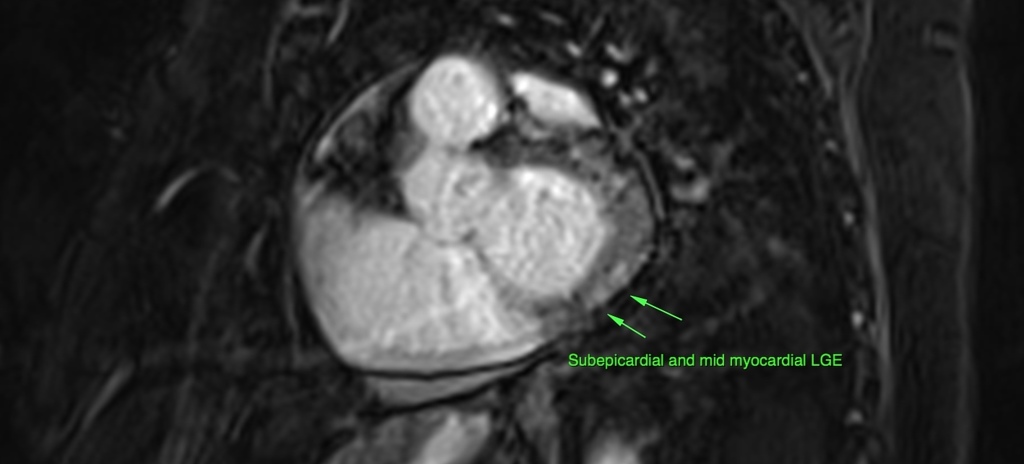 | |
| Neurological | Vasculitis |
|
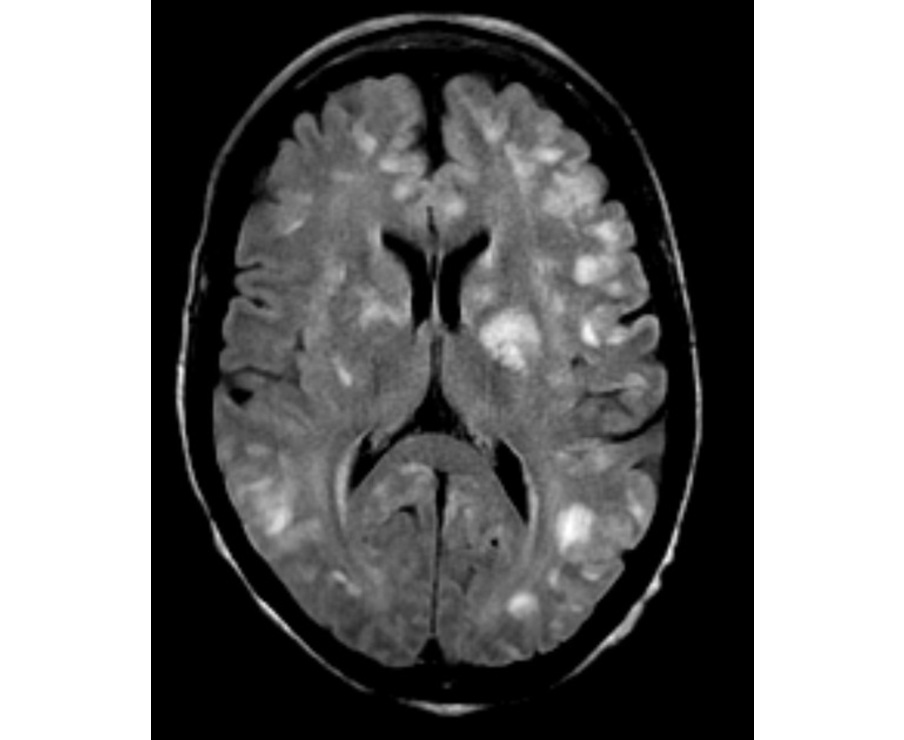 |
| Stroke |
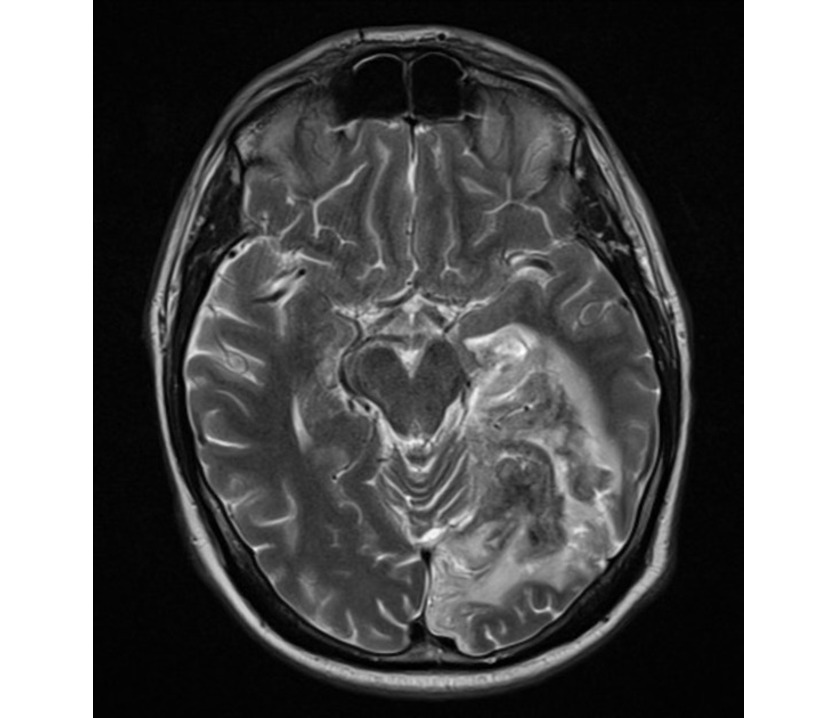 | ||
| Neuropathies |
|
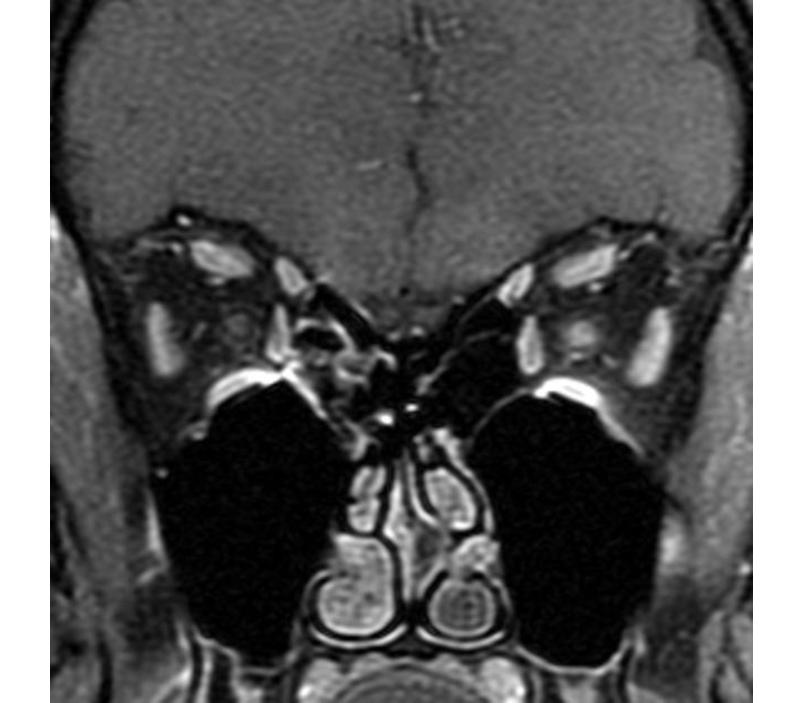 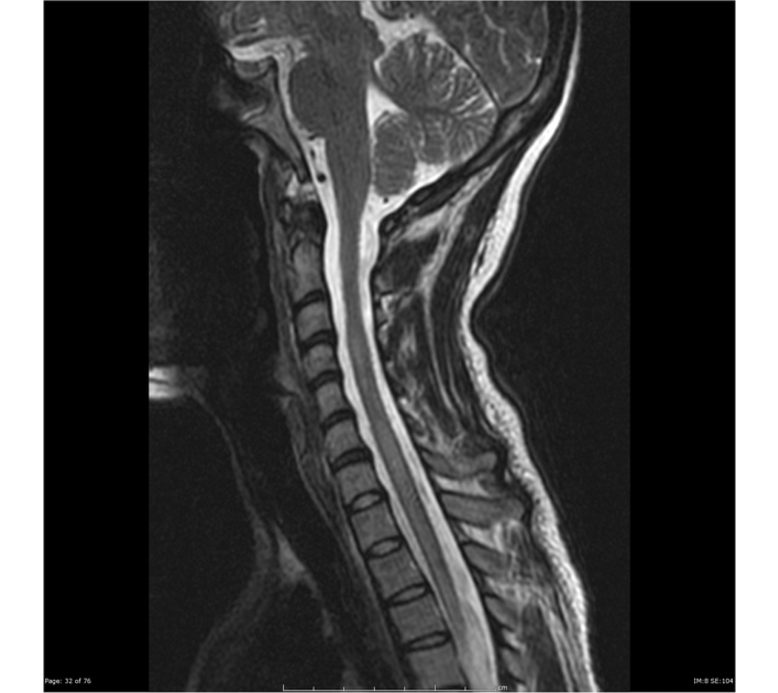 | |
| Autoimmune encephalitis |
|
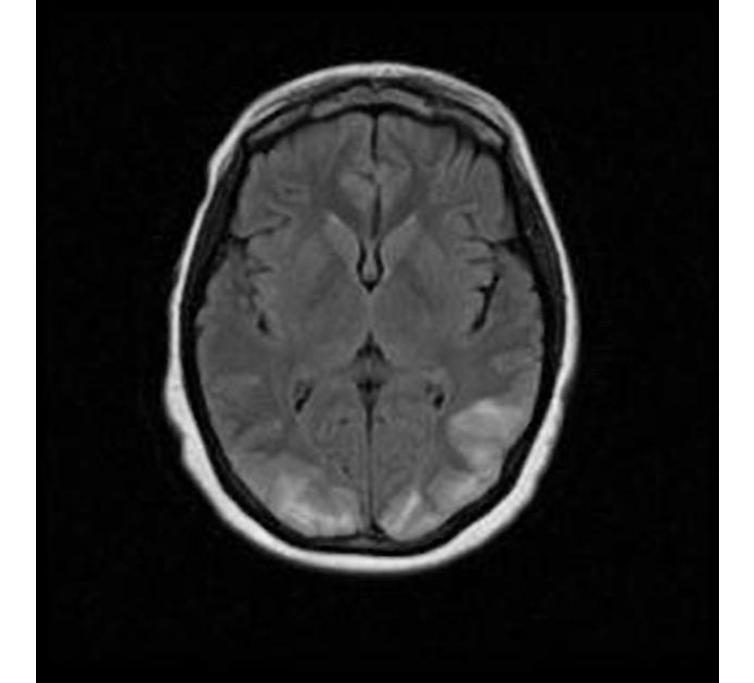 | |
| Musculoskeletal | Raynaud phenomen |
|
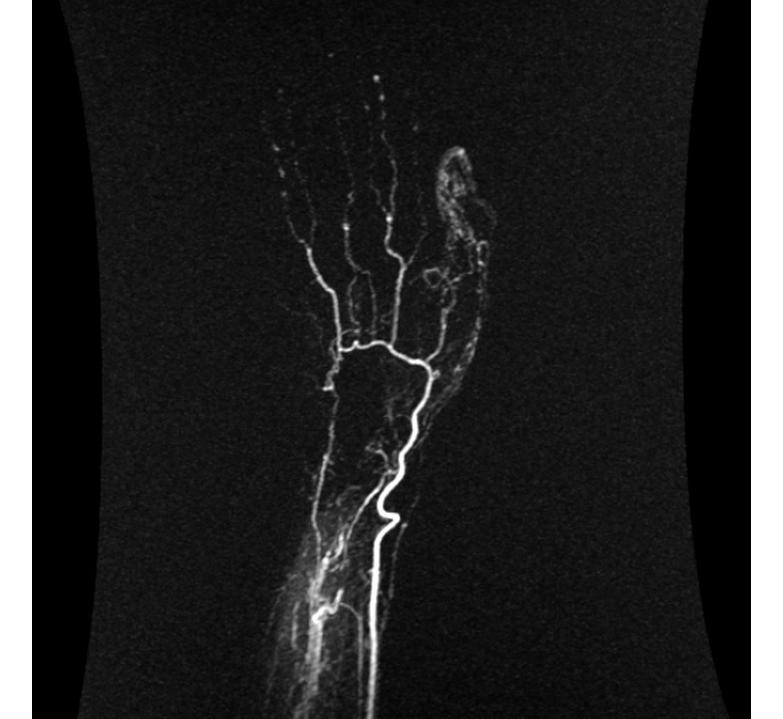 |
| Myositis |
|
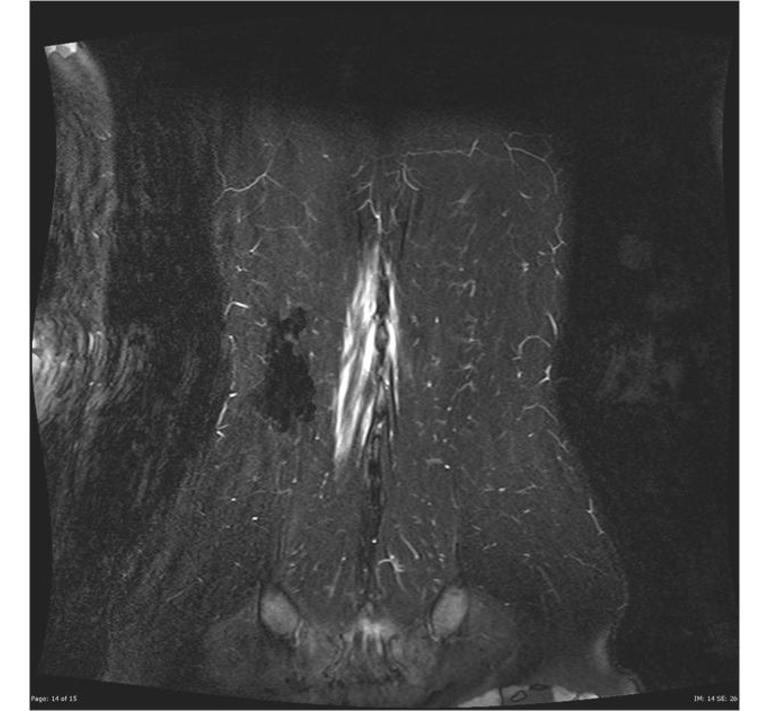 | |
| Arthritis/tenosynovitis |
|
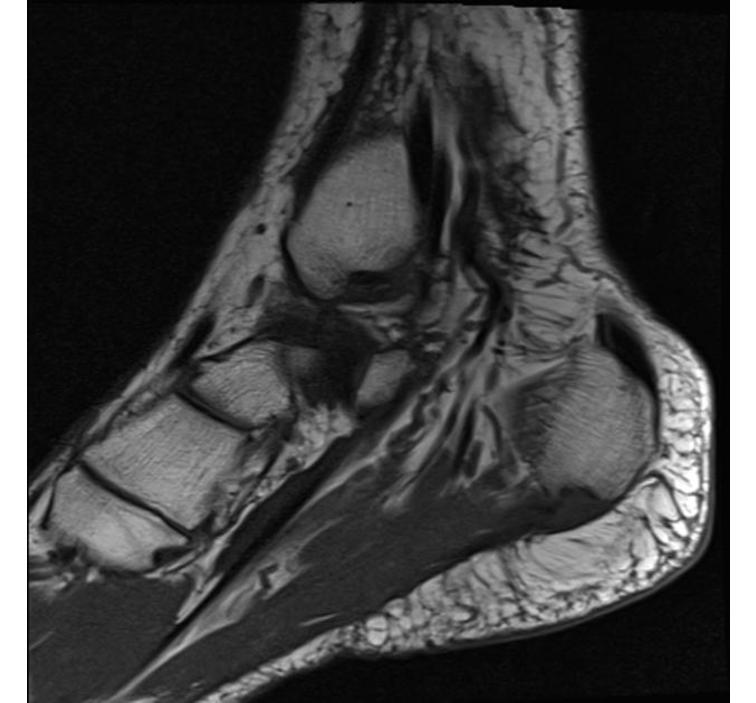 | |
| Osteonecrosis (Avascular necrosis) |
|
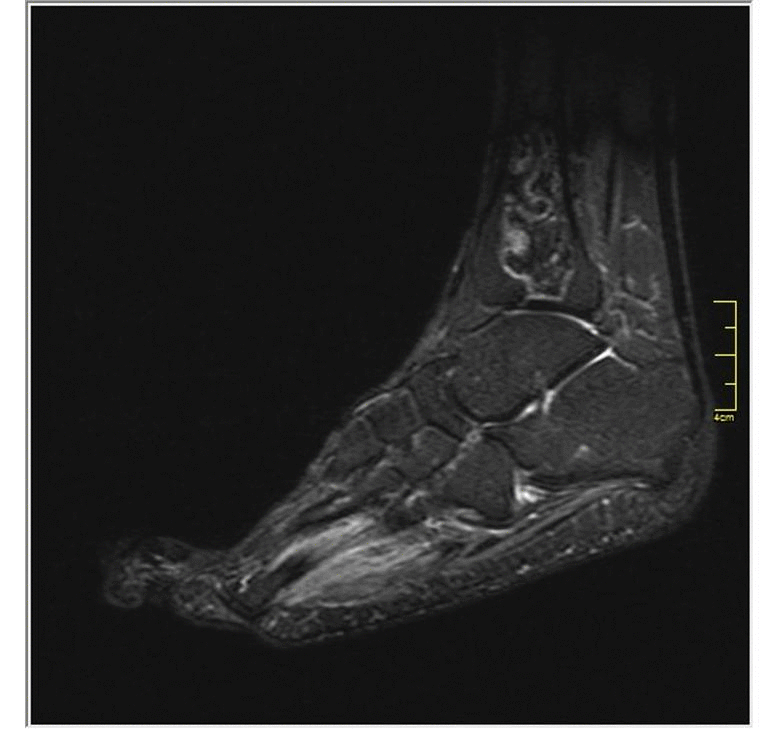 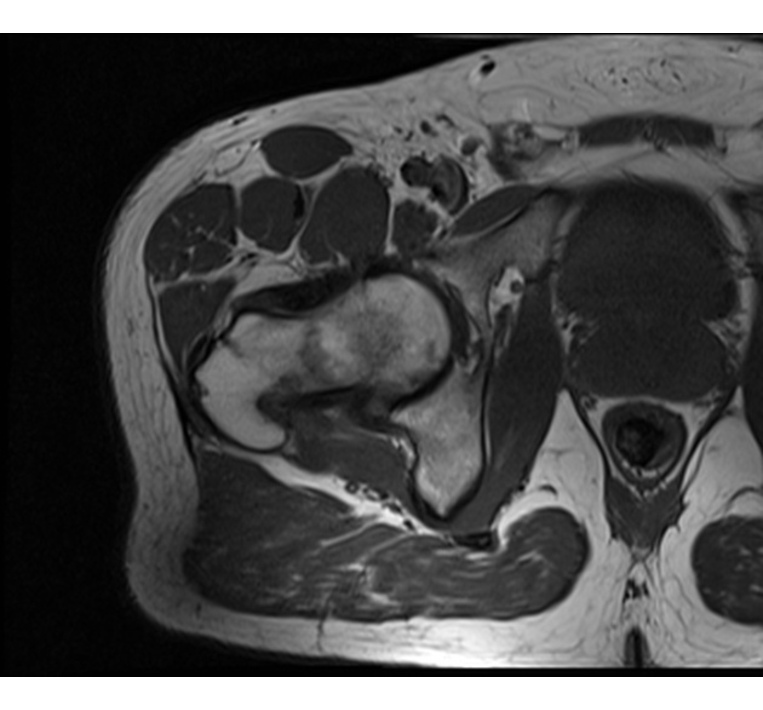 |
References
- ↑ Appenzeller S (2013). "Magnetic resonance imaging in systemic lupus erythematosus: where do we stand?". Cogn Behav Neurol. 26 (2): 53–4. doi:10.1097/WNN.0b013e31829d5b60. PMID 23812167.
- ↑ Thurman JM, Serkova NJ (2015). "Non-invasive imaging to monitor lupus nephritis and neuropsychiatric systemic lupus erythematosus". F1000Res. 4: 153. doi:10.12688/f1000research.6587.2. PMC 4536614. PMID 26309728.
- ↑ Lin K, Lloyd-Jones DM, Li D, Liu Y, Yang J, Markl M, Carr JC (2015). "Imaging of cardiovascular complications in patients with systemic lupus erythematosus". Lupus. 24 (11): 1126–34. doi:10.1177/0961203315588577. PMC 4567427. PMID 26038342.
- ↑ Sarbu N, Bargalló N, Cervera R (2015). "Advanced and Conventional Magnetic Resonance Imaging in Neuropsychiatric Lupus". F1000Res. 4: 162. doi:10.12688/f1000research.6522.2. PMC 4505788. PMID 26236469.
- ↑ Qin H, Guo Q, Shen N, Huang X, Wu H, Zhang M, Bao C, Chen S (2014). "Chest imaging manifestations in lupus nephritis". Clin. Rheumatol. 33 (6): 817–23. doi:10.1007/s10067-014-2586-2. PMID 24696368.
- ↑ Goh YP, Naidoo P, Ngian GS (2013). "Imaging of systemic lupus erythematosus. Part II: gastrointestinal, renal, and musculoskeletal manifestations". Clin Radiol. 68 (2): 192–202. doi:10.1016/j.crad.2012.06.109. PMID 22901453.
- ↑ Gal Y, Twig G, Mozes O, Greenberg G, Hoffmann C, Shoenfeld Y (2013). "Central nervous system involvement in systemic lupus erythematosus: an imaging challenge". Isr. Med. Assoc. J. 15 (7): 382–6. PMID 23943987.
- ↑ Shirato M, Hisa N, Fujikura Y, Ohkuma K, Kutsuki S, Hiramatsu K (1992). "[Imaging diagnosis of lupus enteritis--especially about sonographic findings]". Nihon Igaku Hoshasen Gakkai Zasshi (in Japanese). 52 (10): 1394–9. PMID 1448334.
- ↑ Adachi JD, Lau A (2014). "Systemic lupus erythematosus, osteoporosis, and fractures". J. Rheumatol. 41 (10): 1913–5. doi:10.3899/jrheum.140919. PMID 25275093.
- ↑ Curiel R, Akin EA, Beaulieu G, DePalma L, Hashefi M (2011). "PET/CT imaging in systemic lupus erythematosus". Ann. N. Y. Acad. Sci. 1228: 71–80. doi:10.1111/j.1749-6632.2011.06076.x. PMID 21718325.
- ↑ Goh YP, Naidoo P, Ngian GS (2013). "Imaging of systemic lupus erythematosus. Part I: CNS, cardiovascular, and thoracic manifestations". Clin Radiol. 68 (2): 181–91. doi:10.1016/j.crad.2012.06.110. PMID 22901452.